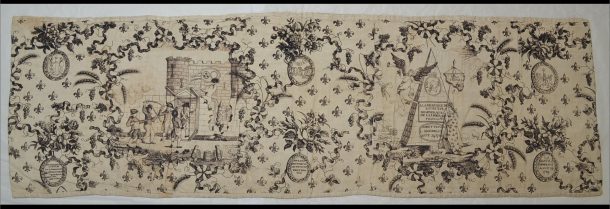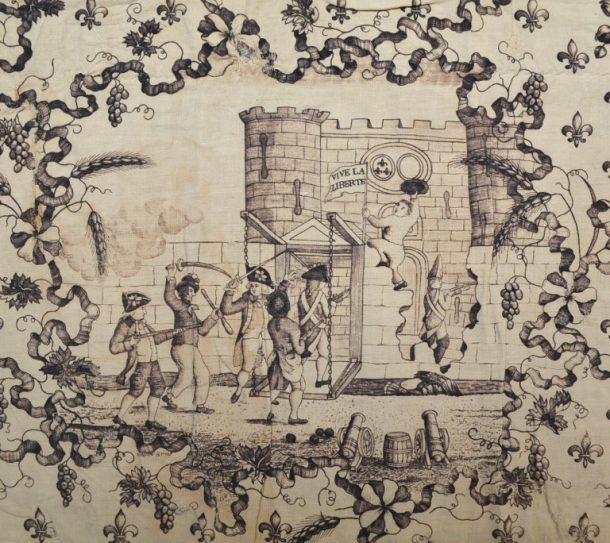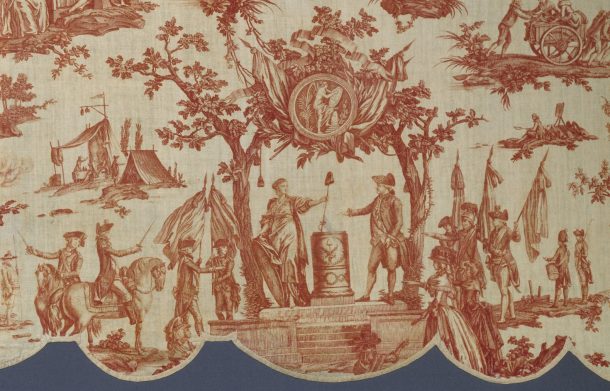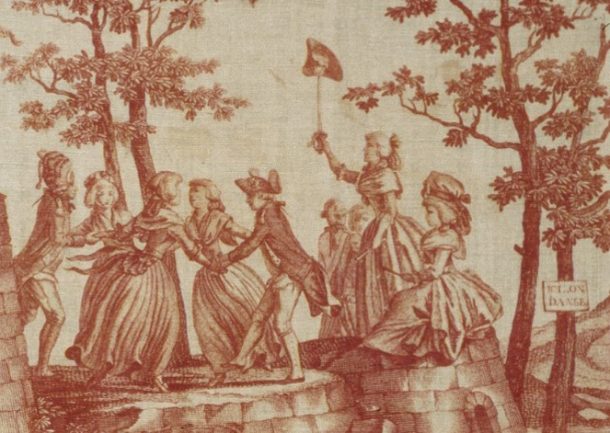Today is Bastille Day!
Bastille Day (formally called Fête Nationale in France) commemorates one of the most famous events of the French Revolution – the day when Parisian revolutionaries stormed the Bastille on July 14th, 1789. The Bastille was a royal fortress which commanded the eastern side of Paris and was considered to symbolise the monarch’s despotism.
The following year, the Fête de la Fédération took place to commemorate the event’s first anniversary and to celebrate the unity of the French Nation during the Revolution. In 1880 Bastille Day officially became a French national holiday.
This makes today a very fitting moment for me to introduce two remarkable textiles, which will feature in our display on the French Revolution. Both are cotton valances (‘bed skirts’) printed with designs featuring the overthrowing of the Bastille.


Both of these valances were probably used as parts of larger sets of bed hangings. Adorning the bedroom with such political decoration may perhaps seem unusual today but the late 18th century saw increased demand for textile designs depicting theatrical and historical scenes (such as naval battles) in France and England. It has been suggested that this trend in textile design reflected a growing involvement of the people as a whole with political events.
This first valance clearly shows the Storming of the Bastille, set among a background of scrolling ribbons and flowers, wheat ears, and fleur-de-lys.

The design also depicts Louis XVI in his brief role as a constitutional monarch, with an inscription on his tomb busy being completed.

The designer or source has not yet been identified but the textile is thought to have been printed in England for export to France. The inscription on the tomb refers to events of August 1789 (when a draft of a constitution was adopted by the National Assembly), suggesting that it was printed soon after this date.
The inclusion of Louis XVI in the design would have seen its popularity significantly wane following the royal Flight to Varennes in June 1791 and for it to have fallen completely out of favour when the royal family were imprisoned in 1792. The manufacturer would have doubtless regretted including Louis XVI, as other elements of the design would have remained popular for a much longer period.
The second valance is also made from cotton, but in this case the design was plate-printed in red and the valance has been given a scalloped edge. NB: Plate-printed means that the design was engraved into copper plates which were then inked and pressed onto the textile to transfer the design. Again, the design includes both the Bastille and a depiction of Louis XVI. Louis XVI is shown at the Confirmation of the Constitution in September 1791, in which he swore an oath to maintain the new French constitution.
Louis XVI is shown here swearing an oath of loyalty at the Altar of Liberty while Marie-Antoinette and the Dauphin pledge allegiance. Lafayette is in the shown on horseback, along with national guards bearing flags.

In the other main scene, people are dancing on the ruins of the Bastille. One lady is holding up a distinctive Phrygian cap on a stick. The Phrygian cap was a popular symbol of the Revolution, representing support and acceptance of the revolutionaries’ power.



